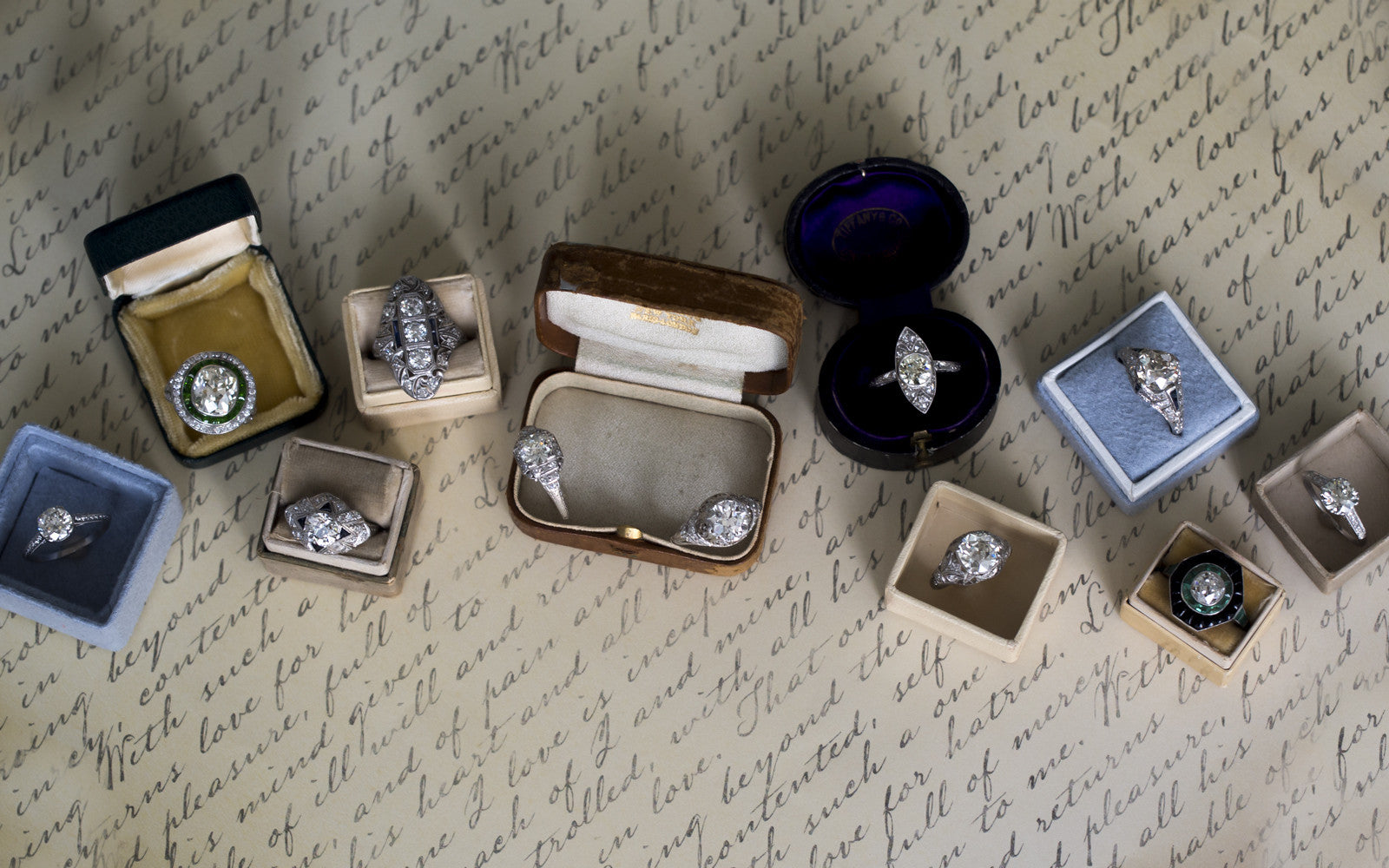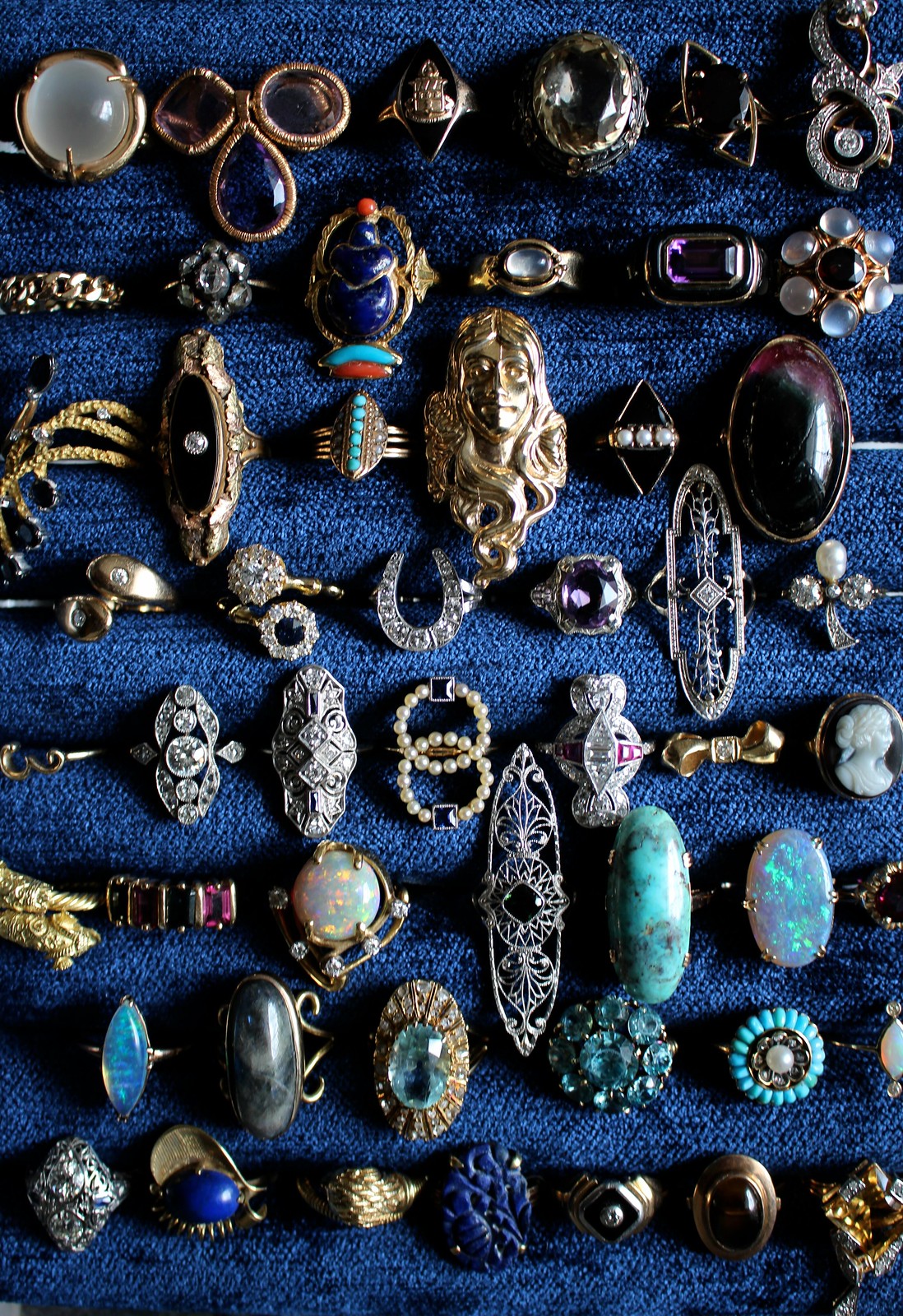Where to Find the Best Estate Jewelry Austin for Unique Pieces
Where to Find the Best Estate Jewelry Austin for Unique Pieces
Blog Article
Reveal the Rich Background Behind Stunning Estate Precious Jewelry Collections
The exploration of estate jewelry collections provides a special home window right into background, disclosing the detailed partnership between craftsmanship and cultural evolution (estate jewelry austin). Each piece is not simply an adornment however a testament to the creative movements and societal values of its time, from the ornate details of the Victorian era to the structured style of the Mid-Century Modern. As we examine these remarkable artefacts, we reveal tales that go beyond generations, triggering us to think about not just their charm, but the lives they have actually touched and the minutes they have actually experienced. What tricks might these collections still hold?
The Origins of Estate Jewelry
Just how did estate fashion jewelry concerned embody the abundant history and artistry of past ages? The origins of estate precious jewelry can be mapped back to various durations of craftsmanship, where jewelry was not just an accessory but a representation of societal worths, technological advancements, and imaginative expressions. Each piece narrates, frequently connected with the lives of their previous owners, encapsulating individual narratives along with historical contexts.
The term "estate fashion jewelry" typically refers to secondhand pieces, usually from considerable periods such as Victorian, Art Nouveau, or Art Deco. These pieces were produced with thorough attention to detail, showcasing the ability of artisans who used products like gold, silver, and precious gemstones. Unlike modern precious jewelry, estate pieces commonly include unique styles that highlight the aesthetics of their time, therefore acting as substantial web links to the past.

Remarkable Layout Ages
Throughout background, a number of noteworthy design eras have actually dramatically affected the development of estate fashion jewelry, each defined by distinct styles, materials, and social contexts. The Georgian period (1714-1837) noted the beginning of intricate layouts, usually including nature-inspired themes and making use of products like gold, silver, and gems embeded in elaborate setups. Following this, the Victorian age (1837-1901) introduced enchanting styles, with sentimental jewelry and cutting-edge methods such as the use of enamel and cameos.
The Art Nouveau duration (1890-1910) celebrated natural types and the charm of nature, making use of products like opals and pearls in flowing layouts. This was prospered by the Art Deco era (1920-1939), which welcomed geometric patterns, strong shades, and lavish materials such as platinum and rubies, showing the modernist spirit of the moment.
The Mid-Century Modern age (1940-1960) showcased streamlined styles and using unusual materials, stressing minimalism and performance. Each of these periods not only mirrors the artistic activities of their time but additionally encapsulates the social worths and technical advancements that formed precious jewelry style, making them a remarkable subject for chroniclers and enthusiasts alike.

Famous Estate Jewelry Collections
The abundant background of estate jewelry is magnificently exemplified by several distinguished collections that display the artistry and craftsmanship from different layout eras. One of the most renowned is the Cartier Collection, which mirrors the luxury and advancement of the legendary French jeweler. Pieces from this collection often include intricate styles and charming gems, highlighting the brand's dedication to great workmanship.
An additional remarkable collection is the Lady of Windsor's jewelry collection, which comprises several distinctive pieces, including the renowned "Windsor" bracelet. This collection not only exemplifies the elegance of the Art Deco period but also carries a rich story of love and loss, as it came from Wallis Simpson, that notoriously wed Edward VIII.
The collection you can find out more of the late starlet Elizabeth Taylor likewise sticks out in the world of estate fashion jewelry. With many pieces developed by popular jewelers like Bulgari and Cartier, her collection embodies prestige and refinement, emphasizing her individual style and affinity for unique gems.
These popular estate fashion jewelry collections work as a testament to the long-lasting attraction of great jewelry, offering understanding right into the imaginative and social motions that shaped their production.
The Social Importance
Estate jewelry collections hold extensive cultural significance, mirroring not just the aesthetic worths of their particular eras yet likewise the historic and social contexts in which they were created. Each item typically embodies the workmanship and creative trends of its time, showcasing the development of design and modern technology in fashion jewelry making.
In addition, these collections offer as tangible web links to cultural customs and rituals. Wedding company website event bands and antique brooches might symbolize love and domestic bonds, while items adorned with details gemstones can represent local or cultural identities. The materials made use of-- whether gold, silver, or jewels-- often inform tales of trade, exploration, and the wide range accumulation of societies.
Furthermore, estate fashion jewelry can function as historic artefacts, providing insights into the lives of people and the societal norms they navigated. The method precious jewelry was worn and valued can expose much regarding sex roles, status, and personal expression within differing social landscapes. As such, estate jewelry transcends simple embellishment, acting as a rich narrative of human experience, creativity, and cultural heritage, inviting contemporary target markets to involve with the past in a purposeful means.
Caring for Your Estate Parts
Caring for estate precious jewelry pieces requires a thoughtful approach to guarantee their durability and protect their distinct characteristics. Constantly tidy estate fashion jewelry using a soft, lint-free towel after each wear to eliminate oils and dirt.
Storage space is similarly essential; shop items separately in a fabric-lined box to stop entangling and scraping. Consider making use of anti-tarnish bags or cloths for silver things, as this assists to decrease the tainting process. In addition, prevent revealing precious jewelry to extreme dampness, extreme temperature levels, or direct sunshine, which can negatively influence gemstones and steels.
Consulting a jewelry expert experienced in vintage or antique items can offer specific treatment options. By carrying out these techniques, collectors can protect their estate precious jewelry's historic and aesthetic worth, making certain these pieces continue to be treasured for generations to come.
Verdict
In conclusion, the exploration of estate fashion jewelry collections discloses a tapestry of imaginative expression and cultural importance, showing the worths and visual appeals of different historic durations. Each item offers as a testament to remarkable workmanship and the stories of those that when possessed them. Understanding the origins, design eras, and notable collections enhances appreciation for these artifacts, emphasizing their role in preserving cultural heritage and encouraging ongoing stewardship and look after these impressive prizes.
The expedition of estate fashion jewelry collections uses a special window into history, disclosing the detailed partnership in between craftsmanship and cultural evolution. The beginnings of estate anchor precious jewelry can be traced back to various periods of workmanship, where fashion jewelry was not merely an accessory yet a representation of societal worths, technical improvements, and creative expressions.The term "estate jewelry" typically refers to secondhand items, typically from significant periods such as Victorian, Art Nouveau, or Art Deco.The abundant history of estate precious jewelry is magnificently exemplified by numerous distinguished collections that showcase the virtuosity and craftsmanship from various style eras.In verdict, the exploration of estate jewelry collections exposes a tapestry of artistic expression and social importance, mirroring the values and visual appeals of numerous historical durations.
Report this page